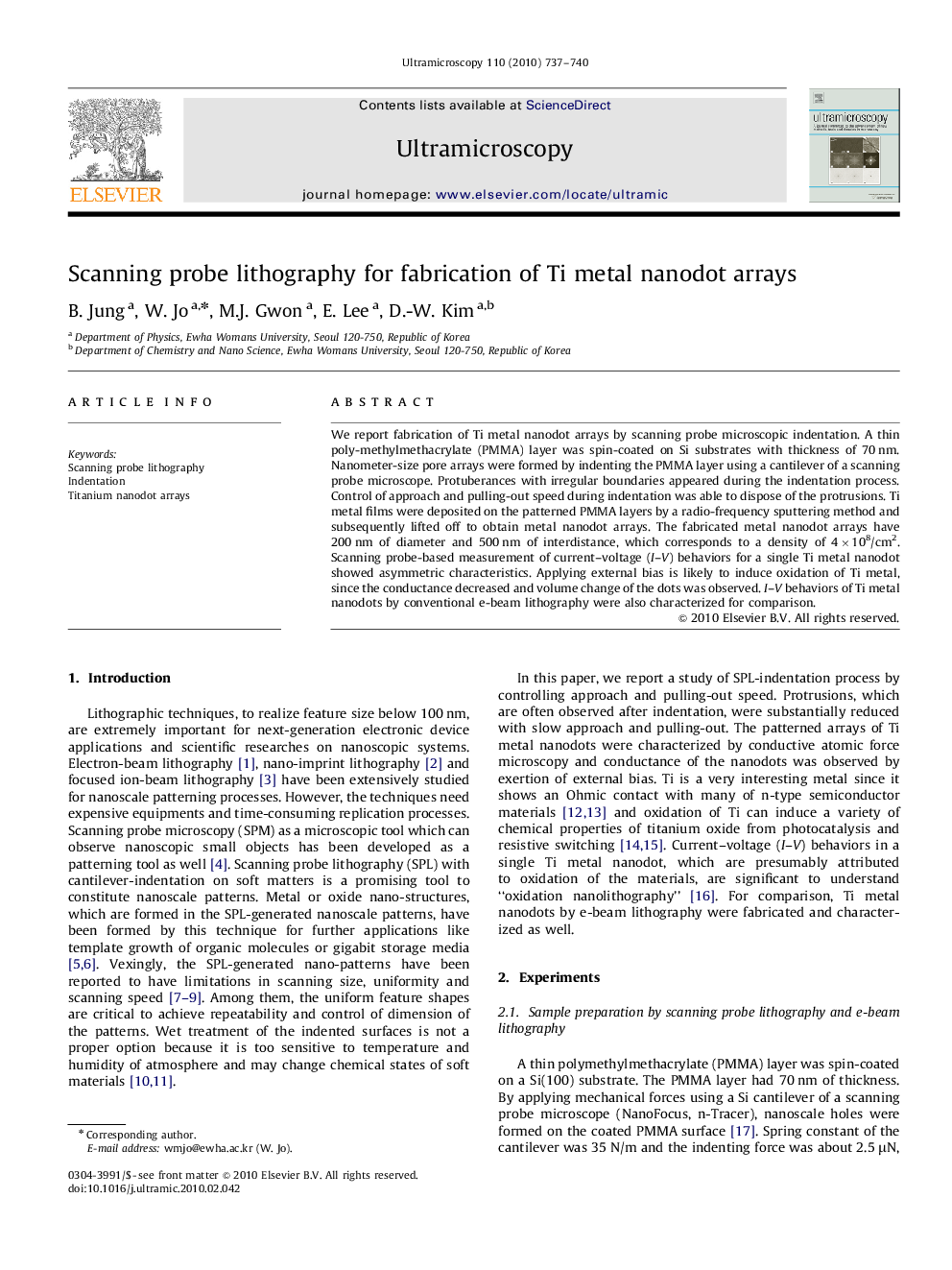| Article ID | Journal | Published Year | Pages | File Type |
|---|---|---|---|---|
| 1678530 | Ultramicroscopy | 2010 | 4 Pages |
Abstract
We report fabrication of Ti metal nanodot arrays by scanning probe microscopic indentation. A thin poly-methylmethacrylate (PMMA) layer was spin-coated on Si substrates with thickness of 70Â nm. Nanometer-size pore arrays were formed by indenting the PMMA layer using a cantilever of a scanning probe microscope. Protuberances with irregular boundaries appeared during the indentation process. Control of approach and pulling-out speed during indentation was able to dispose of the protrusions. Ti metal films were deposited on the patterned PMMA layers by a radio-frequency sputtering method and subsequently lifted off to obtain metal nanodot arrays. The fabricated metal nanodot arrays have 200Â nm of diameter and 500Â nm of interdistance, which corresponds to a density of 4Ã108/cm2. Scanning probe-based measurement of current-voltage (I-V) behaviors for a single Ti metal nanodot showed asymmetric characteristics. Applying external bias is likely to induce oxidation of Ti metal, since the conductance decreased and volume change of the dots was observed. I-V behaviors of Ti metal nanodots by conventional e-beam lithography were also characterized for comparison.
Related Topics
Physical Sciences and Engineering
Materials Science
Nanotechnology
Authors
B. Jung, W. Jo, M.J. Gwon, E. Lee, D.-W. Kim,
